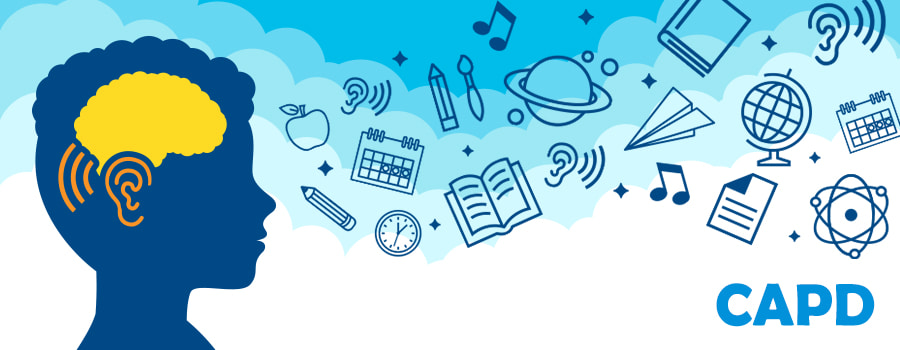Homeschooling a Child with CAPD
Central Auditory Processing Disorder (CAPD) (also known as Auditory Processing Disorder—APD) in children affects up to 5% of the population by impeding how they process the sounds they hear. Although no actual hearing loss is involved, individuals with auditory processing issues have difficulty with recognizing subtle distinctions in the sounds of words and following verbal instructions.
This disorder can make learning difficult—particularly in classroom situations where auditory distractions are plentiful. If you are exploring the option of homeschooling your child with CAPD, the following information can help.
Is CAPD a Learning Disability?
Although CAPD is not considered a learning disability itself, it can make some aspects of education particularly challenging. A child that struggles with auditory processing disorder is unable to properly process information. Their ears can hear, but the brain does not organize and store the information in a way that lets the child remember it easily.
Because the auditory and the language/reading/speech centers of the brain are intertwined, students with CAPD may:
- Miss out on assignments
- Have trouble with phonemic awareness and phonics, precursors to reading
- Misinterpret what they hear
- Misspells or mispronounces certain words
- Be confused by figurative language
CAPD Education Options: Homeschool vs Public School
Signs of auditory processing disorder are usually apparent by preschool but become more prominent by the time students are in grade school. At this point, APD may be affecting everything from your child’s ability to interact in group settings (because of competing background noises) to their ability to follow verbal directions.
You may be wondering if there is a particular educational environment that is best for your student with auditory processing issues. Let’s look at some of the advantages and disadvantages of two different types of schooling options for kids with APD: public school and homeschooling.
| Advantage | Disadvantage | |
| Public School |
|
|
| Homeschool |
|
|
Many families of children with auditory processing disorder choose to homeschool because they discover that a traditional public school environment doesn’t work well for their child. Children who are constantly striving to work at a higher level become discouraged and often give up. By homeschooling, parents can meet their child where he/she is at.
Additionally, parents have full control of how they present information to their student. Because children with CAPD usually have their visual processing intact, it allows them to retain basic concepts that are often the building blocks of success.
Tips for Teaching Students with Auditory Processing Disorder
No two children with an auditory processing disorder will have the same deficits. So it’s important to get to know your child’s specific learning preferences, strengths, and weaknesses. There are, however, some general guidelines for teaching a child with APD that may help.
- Establish eye contact with your child before giving instructions or information.
- Provide visual cues for transitions between activities, such as putting up a card on a bulletin board that shows a picture of what task is next on the schedule.
- Noise reducing headphones can help block out background noise that interfere with the brain’s processing abilities.
- If you are homeschooling more than one child, make sure your student with auditory processing issues has a quiet and isolated place to accomplish their school work.
- When delivering information verbally, speak at a rate and volume that your student can easily follow.
- Encourage your child to ask questions; this can alleviate many instances of miscommunication.
Best Homeschool Programs for Auditory Processing Disorder
Though a child with CAPD struggles with auditory processing, they often thrive when information is presented visually (barring a secondary issue). Strong graphics help them retain basic concepts so that when information goes into the brain, it sticks—and stays in place. Your child is then able to build on basic concepts.
Strong interactive graphics do two things:
- Add the ‘glue’ so that information sticks and stays put in the appropriate part of the brain
- Allow children with C.A.P.D. to work independently so they begin to build self confidence
A computer-based curriculum may be part of the educational answer for children with auditory processing problems. Not only will it allow a child to progress at their own rate, the multi-sensory format (blending audio and visual) works especially well for students with this type of disorder. Because you are working at a computer, lap size white boards give children a tool to work out problems easily without the hassle of pencils, paper and erasers.
How Time4Learning Helps Students with CAPD
Time4Learning has quickly become a popular homeschool curriculum for children with CAPD. Even though children with the disorder have some learning challenges in common, it doesn’t mean that your child can or should be pigeonholed. Every child has individual educational needs, and Time4Learning’s customizable format has become a favorite for families homeschooling a child with CAPD.
Parents and students appreciate that the Time4Learning curriculum:
- Proceeds at the student’s own pace.
- Teaches with uncomplicated sounds and clear graphics.
- Allows placing the child at different levels for different subjects, as needed.
- Works with a variety of learning styles.
- Encourages kids to become active learners through exploration and discovery.
- Introduces new learning opportunities in a safe, supportive environment.
- Balances learning with fun!
View our lesson demos and discover why so many families are already using it!







